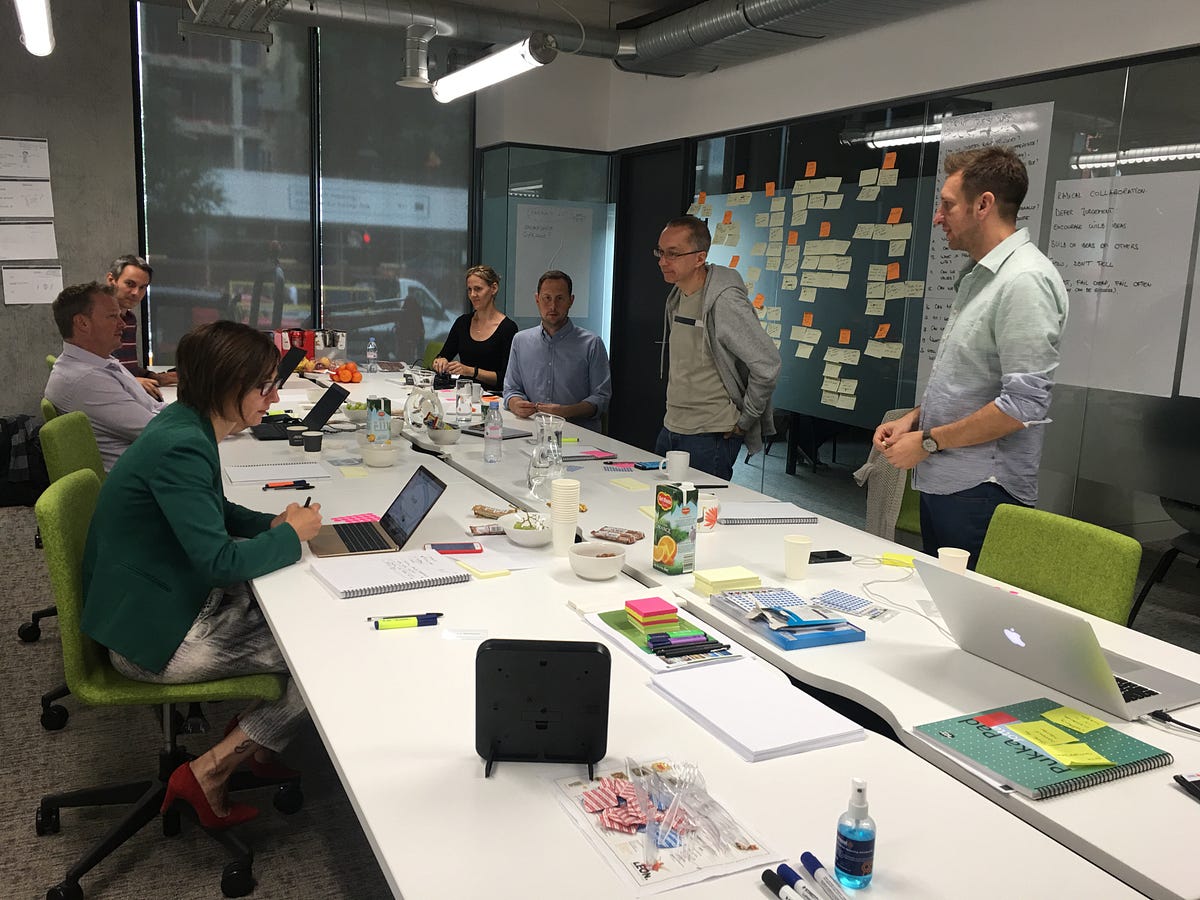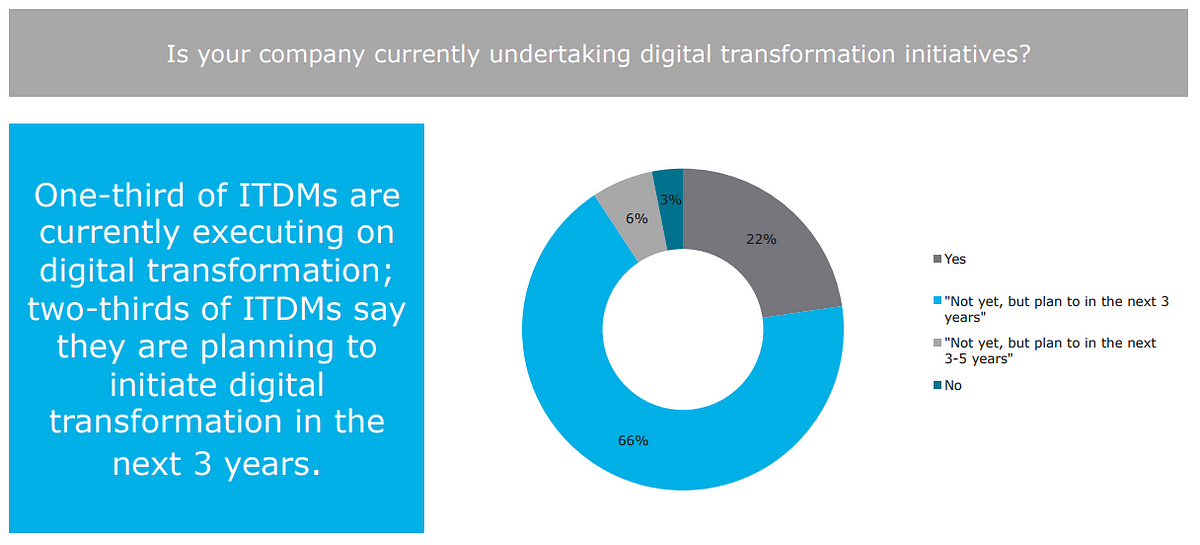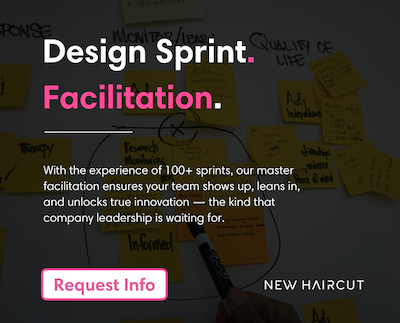Knowledge Management powers digital innovation

Turns out, when companies grow to several thousand employees, and certainly several hundred thousand, it becomes necessary for someone to make sure information is getting shared. Shared across people, functions, departments, delivery centers, and continents, as effectively as possible.
Enter, Knowledge Management (KM).
Can Knowledge Management accelerate innovation?
I was recently invited as a guest to a council meeting comprised of KM Directors from large, multinational corporations. They meet a few times a year to discuss challenges, opportunities, and wins, as well as brainstorm what’s next.
On the agenda for this session was innovation — more specifically, The Role of Knowledge Management in Accelerating Innovation. However, because of their companies’ lack of commitment to digital innovation, most of them felt there was little opportunity here.
In this article I hope to shed light on the struggles KM teams have enabling their company’s innovation programs. And then paint a picture of a different approach that would not only accelerate innovation, but inspire everyone involved.
tl;dr
The stories and stats available to us regarding innovation are not only vague, but offer zero actionable advice. Further, the processes and tools companies take to rally around big ideas is silo’d and fractured — big brainstorming strategy sessions where everyone shirks the responsibility of owning innovation, assuming the next person (read: technology) will carry the rock.
Instead…
What if cross-functional teams would leverage an approach like below?
What if we all owned innovation, collaboratively?
What if, instead of a big corporate announcement that we’re going to increase global digital transformation initiatives by 25% (whatever that means) over the next 3 years, you started this week with a few people?
And what if this worked? My hope is that you, a KM lead, would have a lot of exciting stories to share about the galvanizing innovation going on inside your company.
Digital innovation trends
The majority of trend data stuffed in reports about digital innovation tend to be obvious, bordering on insulting. They’re also predominantly filled with exaggerations. For example…

Q: Is digital transformation important now or in the next 5 years?
A: Yes!
To that, I might add — no shit!
Instead, when we ask more insightful questions that dig deeper, we hear statements like…
“Nobody wants to own digital.”
Imagine that.
All of these reports from Forrester and Nielsen Norman tell us that digital [transformation] is at the top of the heap. How, then, could so many corporate leaders claim that digital is like that last mini hot dog sitting on the platter that everyone wants but nobody reaches for?
Actually, the problem isn’t ownership of digital. The problem is that there’s no process for bringing people of different skill sets and backgrounds together to work efficiently and collaboratively to solve big, complex challenges.
Broken: Digital Strategy Brainstorming Meeting
Let’s walk through a relatable scenario of how corporates typically approach innovation via big brainstorming. In this story, you will be you — a KM leader.
Markus, the VP of Digital Innovation, invites you to a half-day meeting entitled, ‘20XX Digital Strategy Brainstorming.’ It’s scheduled 3 months out to accommodate everyone’s schedule and allow all attendees to prepare with their staff.
The agenda has 7 bullets:
2:00pm-2:05pm: Kickoff [Markus]
2:05pm-3:00pm: Dept. Head Innovation Updates [round-robin]
3:00pm-3:15pm: Break
3:15pm-5:15pm: Innovation Brainstorming [open discussion]
5:15pm-5:30pm: Innovation Announcements [Markus]
5:30pm-5:45pm: Plan next strategy meeting
6:00pm-8:00pm: Dinner reception
14 of the company’s most senior people are invited. On the day of, 10 are in attendance, 2 dial in, and 2 decline last second because they had fires to put out.
After Markus thanks everyone for being there, each person contributes progress their teams have made since the last strategy session. Each person speaks for 5–10 minutes while everyone else stares at their own laptops, peering up only to glimpse the occasionally obscure PowerPoint slide the speaker is presenting.
1 of the people that dialed in has a poor connection so she’s skipped. She drops from the call 30 minutes later and never rejoins. The other dial-in, Steven, has a 1-on-1 dialog with Markus while everyone else checks email. Afterward, Steven remains on mute for the rest of the meeting.
2 people separately excuse themselves during the session for a previously scheduled call.
The Innovation Brainstorming segment begins. Participation is sluggish — nobody really knows what to talk about or where to begin.
Finally, a discussion between Jill (SVP, Business Development) and Raj (SVP, Technology Services) breaks out around 2 potential projects that have been coming up repeatedly for the past couple years. Both projects surround a gap in service that Jill’s team spotted while meeting with various customers. Your company, along with all of your major competitors, have taken no steps to address it. But it would also require a significant rethinking of 1 of your core lines of business.
The conversation goes something like this:
Jill: “Well, as I mentioned during last year’s session, solving for one or both of these could be a major opportunity for us. And now we’ve started to see a few startups attacking the space. Raj, what can we accomplish here before we miss out?”
Raj: “Nothing of significance this year, we’re fully allocated.”
Jill: “I don’t understand why we can’t get a few of your people to just start the process of looking into these things.”
Raj: “If you want to begin, your team needs to first document what you want us to build.”
Jill: “We’re not sure what can be built. That’s what we need your team to do!”
Raj: “We’re not going to blindly allocate people on a project the executive committee may wind up killing anyway. Plus, there’s no way it’s important enough for me to pull the same people supporting our core platform.”
Jill: “Well then I’m just going throw an RFP together and contract it out.”
Raj: “That’s fine, but anything outside vendors implement need to be reviewed and approved by my staff.”
Jill: “So can we get 1 person from your staff to work with them?”
Raj: “Not this year.”
Jill, throwing her hands up in the air says, “I give up!”
Everyone other than Jill and Raj check email throughout the discussion or pretend to scribble notes down. Markus asks everyone else to chime in — it’s agreed that you’ll all discuss some more during the next session in 120 days.
To ensure the meeting ends on a high note, Markus provides several exciting updates:
The company’s 3rd, and most luxurious, innovation lab is set to open in your Ireland office in 6 months. It’s only 3 months behind schedule and $1M over budget (total budget: $4.5M).
The 3rd cohort of the company’s 6-month startup incubator just completed — they’ve come a long way with the format, however the projects that came out of it were killed because they didn’t strategically align with the company’s vision. Each cohort has required an average all-in budget of $1M.
Markus’ team is piloting the adoption of an innovation crowdsourcing platform where all 125,000 employees will have the opportunity to submit and vote on ideas for the company’s next big innovation. He’s still trying to figure out how they’ll score thousands of potential ideas, and when they’ll be worked on. At $40/seat, the platform will cost the company $5M.
Everyone claps. You depart for dinner.
As you get in your Uber to head to the airport to go home, you think to yourself — Well, that was a collosal waste of time. It was the same thing you thought after last year’s session.
Final meeting statistics
Between all of the email exchanges, team meetings, time in PowerPoint, the meeting itself (including travel), you dedicated 50 hours to this meeting. Add in the time you pulled from your staff over the past 90 days: 290 hours. Conservatively multiply by 10 for all attendees and their staff: 2,900 total hours. Conservatively assume an average salary of $75/hr — that meeting, minus flights, hotel, Uber rides, and dinner, had a direct cost to the company of $217,500.
But cost aside, the more important factor is that the only things that came out of it were:
Agreement on the date for the next strategy session, following the exact same format and accomplishing the exact same thing (nada).
Everyone wondering what the hell Steven does all day.
Jill and Raj wanting to throw things at each other.
Group consensus that nothing will ever change at your company and, maybe, it’s time to start looking for a new gig.
No wonder you (KM) have nothing to share.
What if: Hands-on Innovation Workshop
What if, instead of the scenario above, something like this happened…
You receive an email from Markus. He selected you to join a group of 7 others for an intensive, 4-day workshop to focus on one major,executive-approved opportunity.
It will be held in 45 days to allow all attendees to clear their schedules. Very little preparation is required other than reviewing the deck he’s attached, and joining a 2-hour virtual prep session 1 week prior to the workshop.
The deck is a summary of the research and framing Markus (and team) conducted over the past 3 weeks that allowed them to choose the first of the 2 projects Jill has been pushing for the past 3 years. His team invalidated the 2nd project during their market research. That saved the company an estimated $9.3M in research, new product development, training, rollout, and customer support.
Markus ends his email by stating that the output of the meeting will be a customer-validated proof-of-concept that can be confidently signed off by senior leadership, and then scheduled for implementation within Raj’s team.
During the prep session you learn that you’ll be part of the company’s first Design Sprint, a 5-day design thinking framework that’s been successfully deployed by Google, Prudential, Deutsche Telekom, Uber, and thousands of others.
Because of the prep work Markus has done, your sprint has been shortened from 5 days to 4. Markus then gives everyone on the call a chance to voice their hopes and fears with the project. He captures this information.
The next week you arrive to the office on Tuesday morning at 8:30am. Markus states that the workshop will begin at 10:00am, sharp. This gives you an hour or so to eat / caffeinate and attend to your usual inbox and staff needs.
During the first day, thanks to Markus’ pre-work, the entire team does a deep dive on the well-defined problem. You review all of the hopes & fears previously captured and add additional goals and questions that may come up — that info is kept in plain sight for the rest of the week.
The team is comprised of people well-versed in the problem from their respective backgrounds and skill sets. 4 additional experts are brought in to add their perspective.
For 4 days, the team enters the room at 10:00am and exits at 5:00pm, stopping for small breaks and lunch. No one is on their phones or laptops — more importantly, nobody wants to be.
Each day, there is a precise set of exercises carried out in perfect, time-boxed cadence. Anything other than the problem you’re here to solve is captured by Markus in a Parking Lot.
Building off of the research Markus collected and shared, along with the knowledge you already had coming into the session, you all work collaboratively — each person contributes their own visual ideas to the solution you agree to be the best.
The team is exhausted at the end of each session but additionally confesses (even after the first day) that this process is like nothing you’ve ever tried before. You’re all sold.
On the 3rd day, the team has, to your astonishment, created a working prototype that provides a first-of-kind solution to this long-standing customer problem. And on the 4th day, 4 of the 5 targeted customers you brought in to test your prototype, provide the feedback you need to push forward with building a marketable solution.
Markus, elated, runs around the room high-fiving each of you.
As day 4 draws to a close, Markus agrees to capture all of the insights, next steps, and customer interviews in a deck to share with senior leadership.
Raj, feeling more in tune with the customer, team, and technical needs than ever before in his professional career, signs up to create the product roadmap. It will summarize the features, resources, and timelines to turn the prototype into your company’s newest, most innovative product offering. Markus will include it in his report to help receive final sign-offs.
The team unanimously agrees that you will share the week’s experience with your teams. And as the KM lead, you now have your work cut out for you… there is so much that needs to be captured from the success of this pilot. Team members across offices should begin incorporating the learnings from this session.
On the way to the airport that night, you start writing a note to your team trying to summarize what you experienced this week. The subject of the email is “WOW!!”
You stop and realize, how different this will be received versus last year’s Innovation 2017! intranet site. Or the 1,000-person hackathon the year before that fell far short from the hype built up around it.
Finally, you won’t need to convince a global workforce that your company is becoming innovative — you can just let the success of this past week do the talking, and build from there.
Pushback on this approach
Inevitably, someone is going to read this, scoff, and say to themselves, “Oh right! Like anyone has 4 consecutive days to spend on ONE thing!” Another will say, “But we’re already doing Agile and nothing changed!” Or whatever other excuse they cook up about why this approach won’t work at their company.
To them I say, by all means then, keep doing what you’re doing.
Making this actionable
To wrap up, here are 5 techniques we’ve implemented with other KM leaders to turn the stories and value in this article into reality.
Kickstart progress by sharing this article (including references below) and publication with other innovators in your company.
Make sure you / your team is included in the first handful of innovation workshops. I recommend being an active participant (vs. observing), and then stealing time with the facilitator to gain a deeper understanding.
In subsequent workshops, bring in some media folks to capture pics and videos of the workshop — avoid this during the first 2–3 workshops.
Work with the facilitator to create a playbook, including: problem / project, team members, play-by-play of exercises (by day), links to prototypes, recap of customer interviews, progress since the workshop.
If you’re facing fierce opposition, you might consider a side-by-side comparison of pre-existing process vs. this process for an upcoming project.
Additional References
Product Managers: Get notified about our upcoming book about integrating Google Design Sprints into your product development process.
Start With Why, by Simon Sinek
Sprint, by Jake Knapp
The Innovation Paradox, by Tony Davila


